Increasing thickness of coarse-grained carbon electrodes for high device capacitance
Oleksiy Gogotsi a, b*, Vladimir Izotov c, d, Xuehang Wang e, Dmytro Havrykovc, Illia Koltsov a,c, Wei Han c,d, Alla Serhienko a, Ivan Hrysko a, Yulia Zozulya a, Olga Linyucheva a, Vitaliy Balitskiy a, Veronika Zahorodna a,b, Yury Gogotsi d,e
a Materials Research Center, Kiev 03680, Ukraine
b National Metallurgical Academy of Ukraine, Dnipro 49600, Ukraine
c International Center of Future Science, Jilin University, Changchun, 130012, P.R. China
d Key Laboratory of Physics and Technology for Advanced Batteries (Ministry of Education), College of Physics, Jilin University, Changchun 130012, P.R. China
e A. J. Drexel Nanomaterials Institute, and Department of Materials Science and Engineering, Drexel University, Philadelphia, Pennsylvania 19104, United States
Corresponding author: Этот e-mail адрес защищен от спам-ботов, для его просмотра у Вас должен быть включен Javascript
Abstract
The main shortcoming of modern supercapacitors is their low specific capacitance. The main issue that engineers and scientists designing supercapacitors are facing with is to find the ways how to improve specific capacitance and increase the energy density of devices.
One way to enhance the specific capacity is by increasing the content of the active material (porous carbon and electrolyte) relative to passive materials (separator, binder, current collectors and packaging) in supercapacitor electrodes.
The increase of active materials in the electrodes and maintaining their electrochemical and mechanical properties at the same time, in practice can be achieved by using thicker electrodes without changing the current collectors or separators.
However, a saturation effect leads to a decrease in specific capacitance with increasing electrode thickness. Also, to maintain the mechanical properties of thick electrodes, it is necessary to increase the content of the binder, which leads to a decrease in the concentration of the active material. Passive materials do not contribute to the energy storage by the supercapacitor but affect its specific characteristics.
Herein we report about the effect of all the above factors on the specific capacitance of supercapacitor devices.
We show that electrodes with up to 1 mm thickness (compared to 50-200 microns in commercial devices) can be manufactured when coarse-grained activated or carbide-derived carbon is used.
An analytical expression connecting the dimensions of passive elements of the electrochemical system and the parameters describing the specific capacitance as a function of thickness of the carbon electrode is obtained. Experimental studies of the dependence of specific capacitance on the thickness of carbon-based electrodes have been carried out.
The obtained experimental data are in good agreement with the model predictions.
References
[1] P. Simon, Y. Gogotsi, Materials for electrochemical capacitors, Nat. Mater. 7 (2008), p. 84
[2] Dyatkin, O. Gogotsi, B. Malinovskiy, Y. Zozulya, P. Simon, Y. Gogotsi, High capacitance of coarse-grained carbide derived carbon electrodes. J. Power Sources 306 (2016), pp. 32-41.
[3] C. Portet, G. Yushin, Y. Gogotsi, Effect of carbon particle size on electrochemical performance of EDLC, J. Electrochem. Soc. 155 (2008), pp. A531-A536.
[4] B. Dyatkin, O. Gogotsi, Y. Zozuly, B. Malinovskiy, P. Simon, Y. Gogotsi. High Capacitance of Coarse-Grained Carbide-Derived Carbon Particles. Abstract Book of the 4th International Symposium on Enhanced Electrochemical Capacitors, June 8-12 2015, Montpelier, France, p. 143.
Acknowledgement. This project has received funding from the European Union’s Horizon 2020 research and innovation programme under the Marie Skłodowska-Curie grant agreement No 690853.
| 2018 IEEE 8th International Conference on Nanomaterials: Applications & Properties, September 09-14, 2018 |
|
|


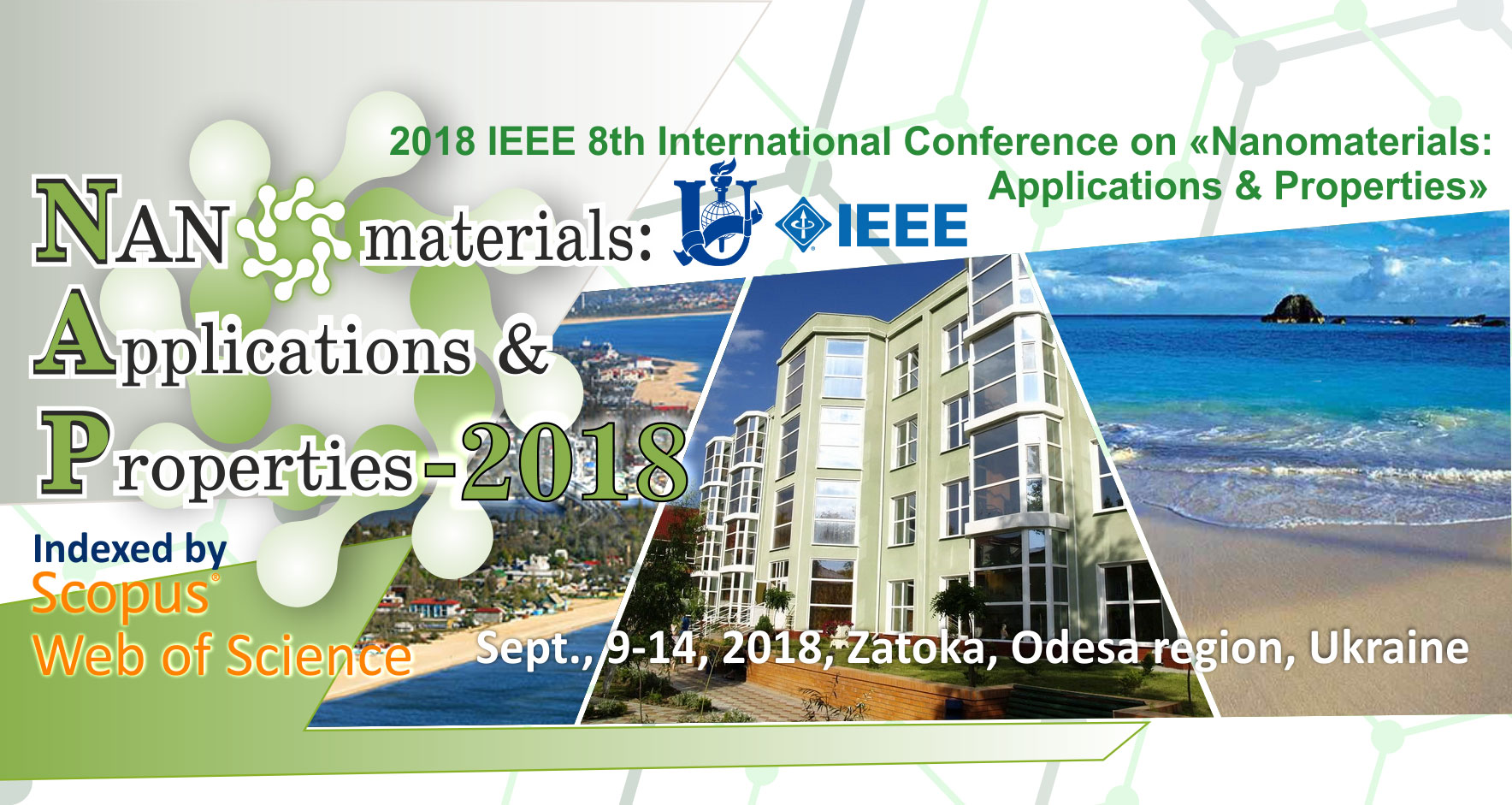 At the poster session of the conference Oleksiy Gogotsi presented two poster presentations on advanced nanomaterials for different applications, prepared with colleagues from Drexel University, USA, and Jilin University, China
At the poster session of the conference Oleksiy Gogotsi presented two poster presentations on advanced nanomaterials for different applications, prepared with colleagues from Drexel University, USA, and Jilin University, China
 Highlights
Highlights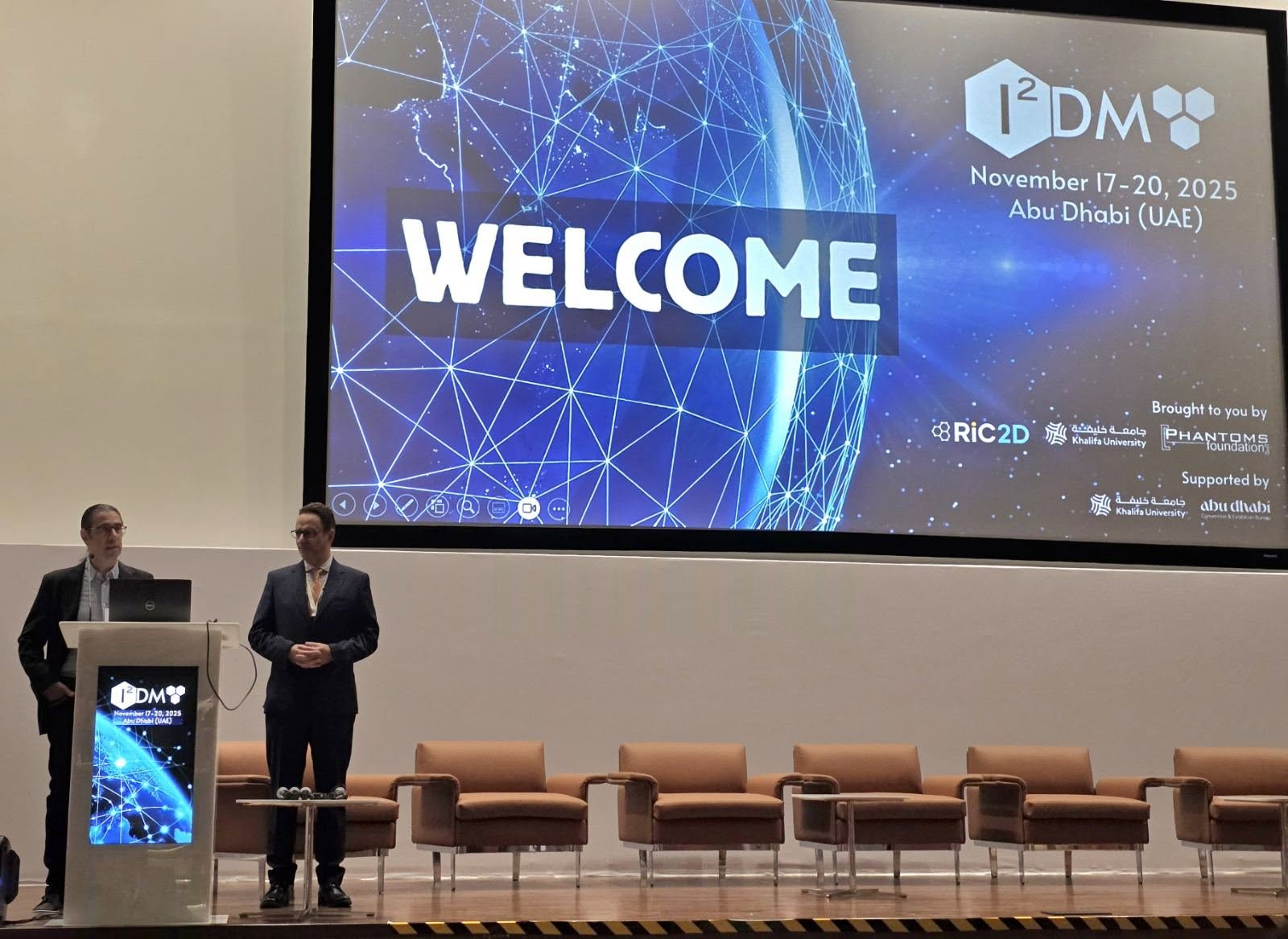 We are excited to share that our Carbon-Ukraine (Y-Carbon LLC) company participated in the I2DM Summit and Expo 2025 at Khalifa University in Abu-Dhabi! Huge thanks to Research & Innovation Center for Graphene and 2D Materials (RIC2D) for hosting such a high-level event.It was an incredible opportunity to meet brilliant researchers and innovators working on the next generation of 2D materials. The insights and energy from the summit will definitely drive new ideas in our own development.
We are excited to share that our Carbon-Ukraine (Y-Carbon LLC) company participated in the I2DM Summit and Expo 2025 at Khalifa University in Abu-Dhabi! Huge thanks to Research & Innovation Center for Graphene and 2D Materials (RIC2D) for hosting such a high-level event.It was an incredible opportunity to meet brilliant researchers and innovators working on the next generation of 2D materials. The insights and energy from the summit will definitely drive new ideas in our own development. Carbon-Ukraine team had the unique opportunity to visit XPANCEO - a Dubai-based deep tech startup company that is developing the first smart contact lenses with AR vision and health monitoring features, working on truly cutting-edge developments.
Carbon-Ukraine team had the unique opportunity to visit XPANCEO - a Dubai-based deep tech startup company that is developing the first smart contact lenses with AR vision and health monitoring features, working on truly cutting-edge developments. Our Carbon-Ukraine team (Y-Carbon LLC) are thrilled to start a new RIC2D project MX-Innovation in collaboration with Drexel University Yury Gogotsi and Khalifa University! Amazing lab tours to project collaborators from Khalifa University, great discussions, strong networking, and a wonderful platform for future collaboration.
Our Carbon-Ukraine team (Y-Carbon LLC) are thrilled to start a new RIC2D project MX-Innovation in collaboration with Drexel University Yury Gogotsi and Khalifa University! Amazing lab tours to project collaborators from Khalifa University, great discussions, strong networking, and a wonderful platform for future collaboration.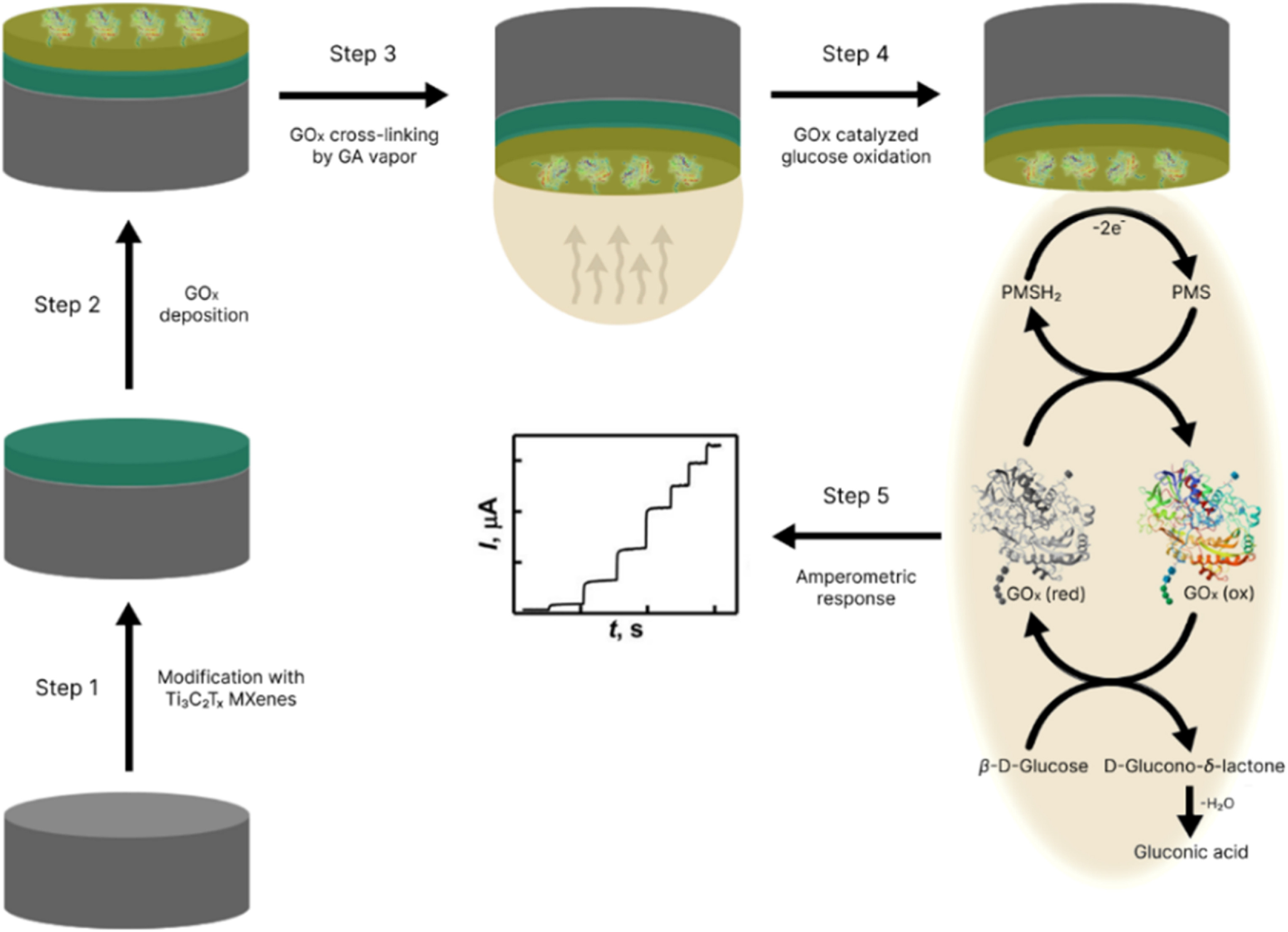
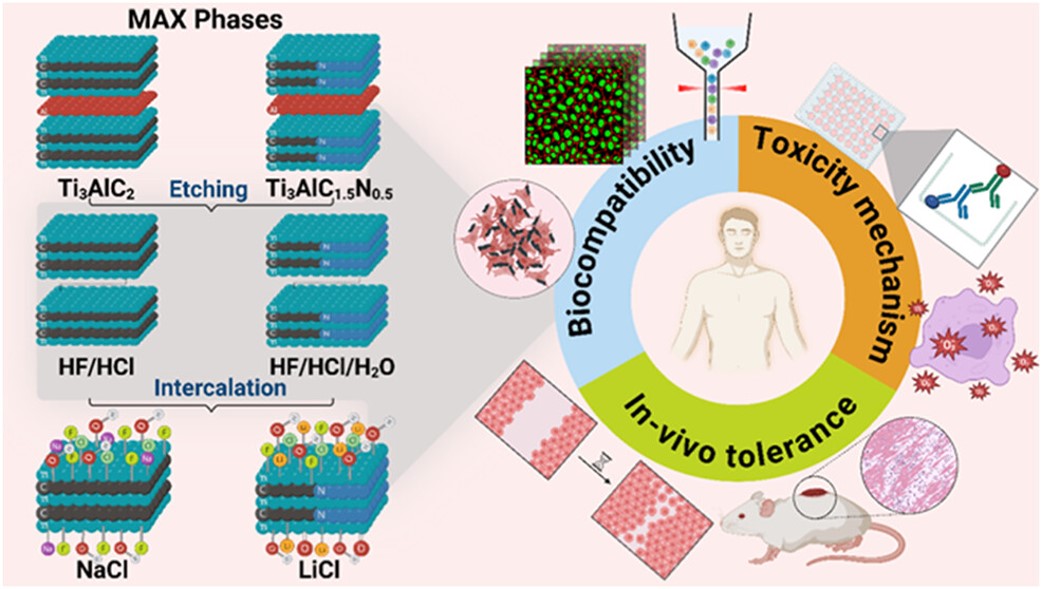 MXenes potential applications include sensors, wound healing materials, and drug delivery systems. A recent study explored how different synthesis methods affect the safety and performance of MXenes. By comparing etching conditions and intercalation strategies, researchers discovered that fine-tuning the surface chemistry of MXenes plays a crucial role in improving biocompatibility. These results provide practical guidelines for developing safer MXenes and bring the field one step closer to real biomedical applications.
MXenes potential applications include sensors, wound healing materials, and drug delivery systems. A recent study explored how different synthesis methods affect the safety and performance of MXenes. By comparing etching conditions and intercalation strategies, researchers discovered that fine-tuning the surface chemistry of MXenes plays a crucial role in improving biocompatibility. These results provide practical guidelines for developing safer MXenes and bring the field one step closer to real biomedical applications. An excellent review highlighting how MXene-based sensors can help tackle one of today’s pressing environmental challenges — heavy metal contamination. Excited to see such impactful work moving the field of environmental monitoring and sensor technology forward!
An excellent review highlighting how MXene-based sensors can help tackle one of today’s pressing environmental challenges — heavy metal contamination. Excited to see such impactful work moving the field of environmental monitoring and sensor technology forward!
 Carbon-Ukraine team was truly delighted to take part in the kickoff meeting of the ATHENA Project (Advanced Digital Engineering Methods to Design MXene-based Nanocomposites for Electro-Magnetic Interference Shielding in Space), supported by NATO through the Science for Peace and Security Programme.
Carbon-Ukraine team was truly delighted to take part in the kickoff meeting of the ATHENA Project (Advanced Digital Engineering Methods to Design MXene-based Nanocomposites for Electro-Magnetic Interference Shielding in Space), supported by NATO through the Science for Peace and Security Programme.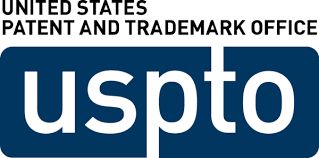 Exellent news, our joint patent application with Drexel University on highly porous MAX phase precursor for MXene synthesis published. Congratulations and thanks to all team involved!
Exellent news, our joint patent application with Drexel University on highly porous MAX phase precursor for MXene synthesis published. Congratulations and thanks to all team involved!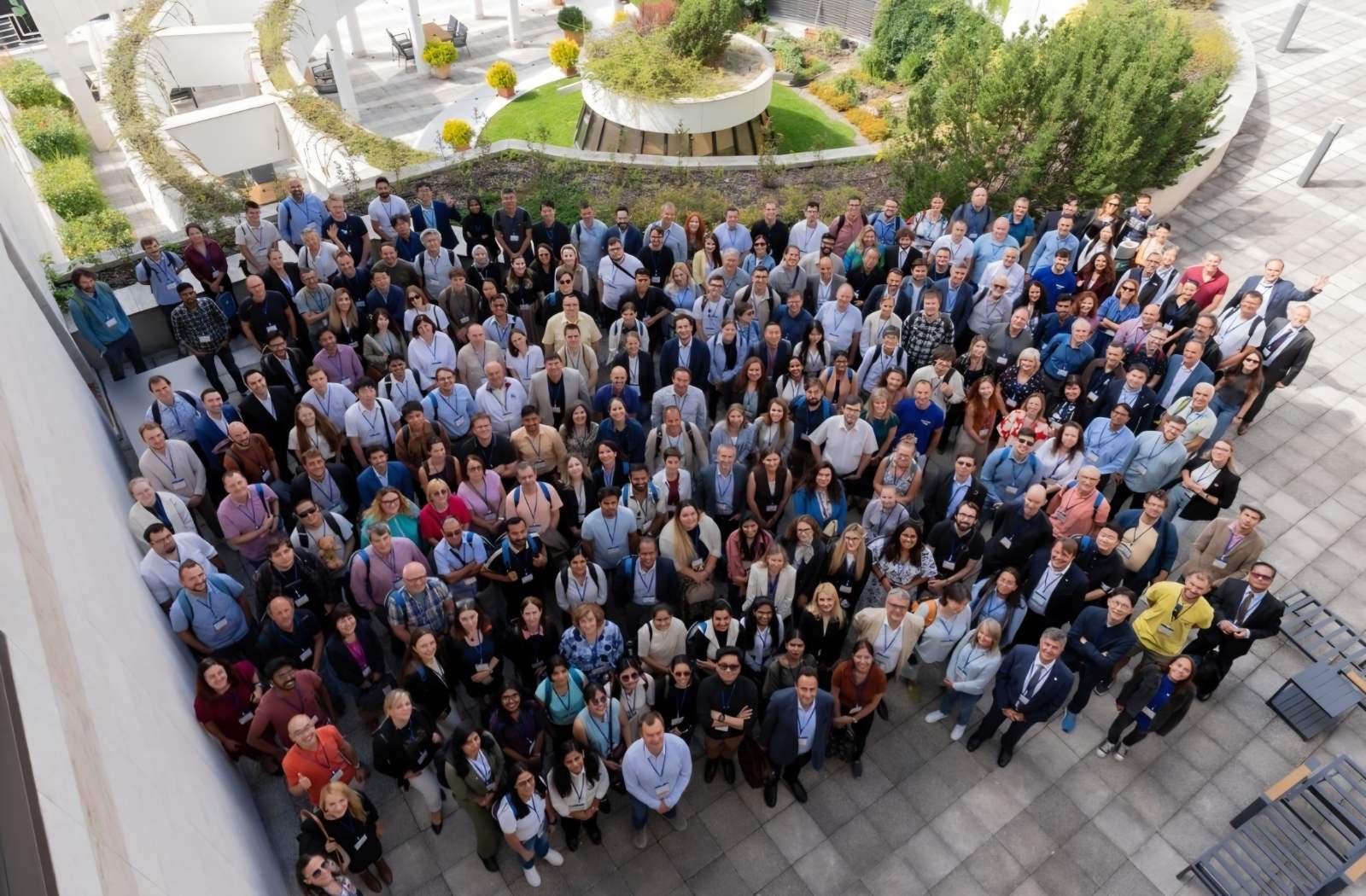 Our team was very delighted to take part in International Symposium "The MXene Frontier: Transformative Nanomaterials Shaping the Future" – the largest MXene event in Europe this year!
Our team was very delighted to take part in International Symposium "The MXene Frontier: Transformative Nanomaterials Shaping the Future" – the largest MXene event in Europe this year!  Last Call! Have you submitted your abstract for IEEE NAP-2025 yet? Join us at the International Symposium on "The MXene Frontier: Transformative Nanomaterials Shaping the Future" – the largest MXene-focused conference in Europe this year! Final Submission Deadline: May 15, 2025. Don’t miss this exclusive opportunity to showcase your research and engage with world leaders in the MXene field!
Last Call! Have you submitted your abstract for IEEE NAP-2025 yet? Join us at the International Symposium on "The MXene Frontier: Transformative Nanomaterials Shaping the Future" – the largest MXene-focused conference in Europe this year! Final Submission Deadline: May 15, 2025. Don’t miss this exclusive opportunity to showcase your research and engage with world leaders in the MXene field!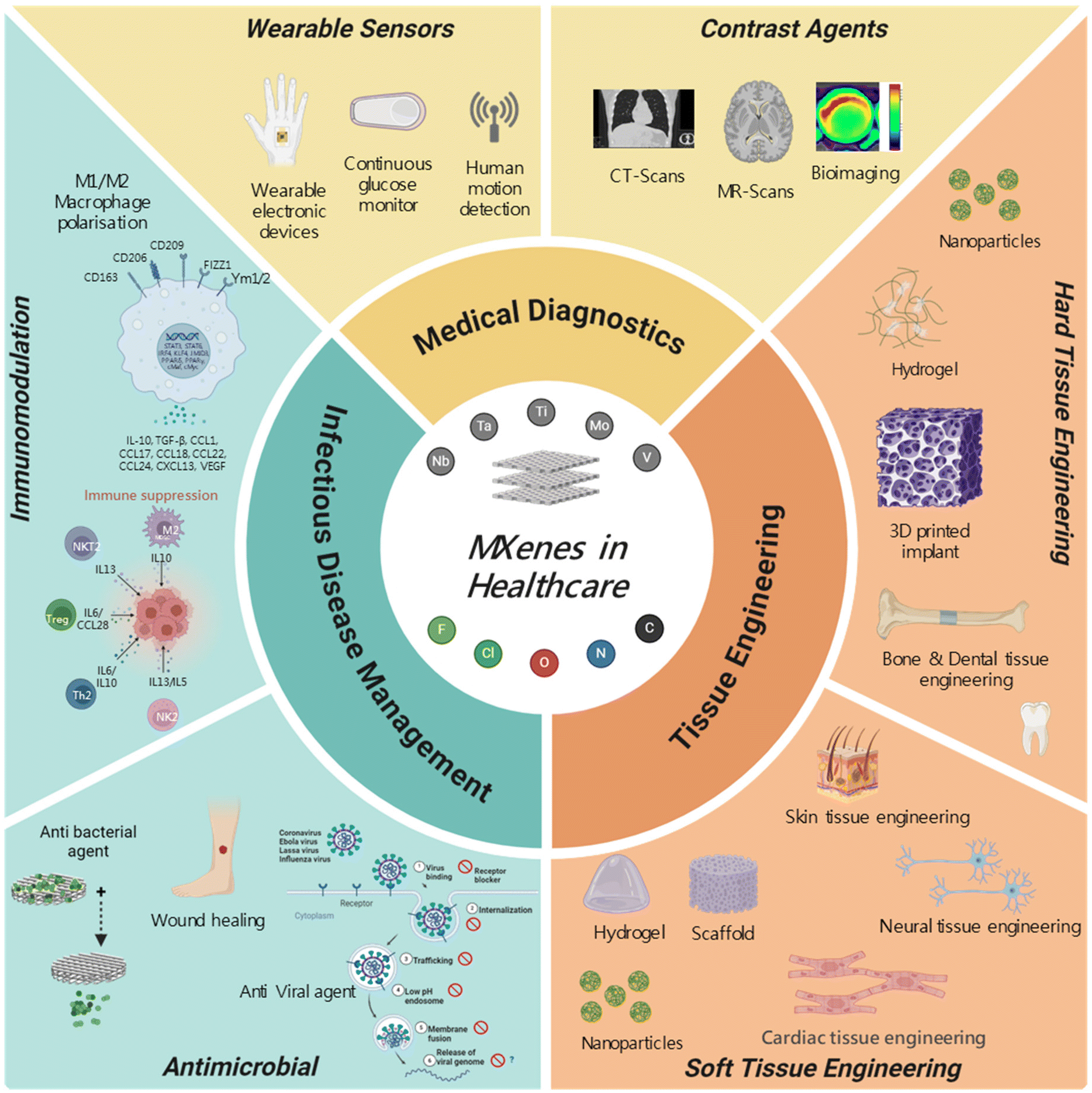 We are excited to announce the publication of latest review article on MXenes in Healthcare. This comprehensive review explores the groundbreaking role of MXenes—an emerging class of 2D materials—in revolutionizing the fields of medical diagnostics and therapeutics. Read the full article here: https://doi.org/10.1039/D4NR04853A.
We are excited to announce the publication of latest review article on MXenes in Healthcare. This comprehensive review explores the groundbreaking role of MXenes—an emerging class of 2D materials—in revolutionizing the fields of medical diagnostics and therapeutics. Read the full article here: https://doi.org/10.1039/D4NR04853A.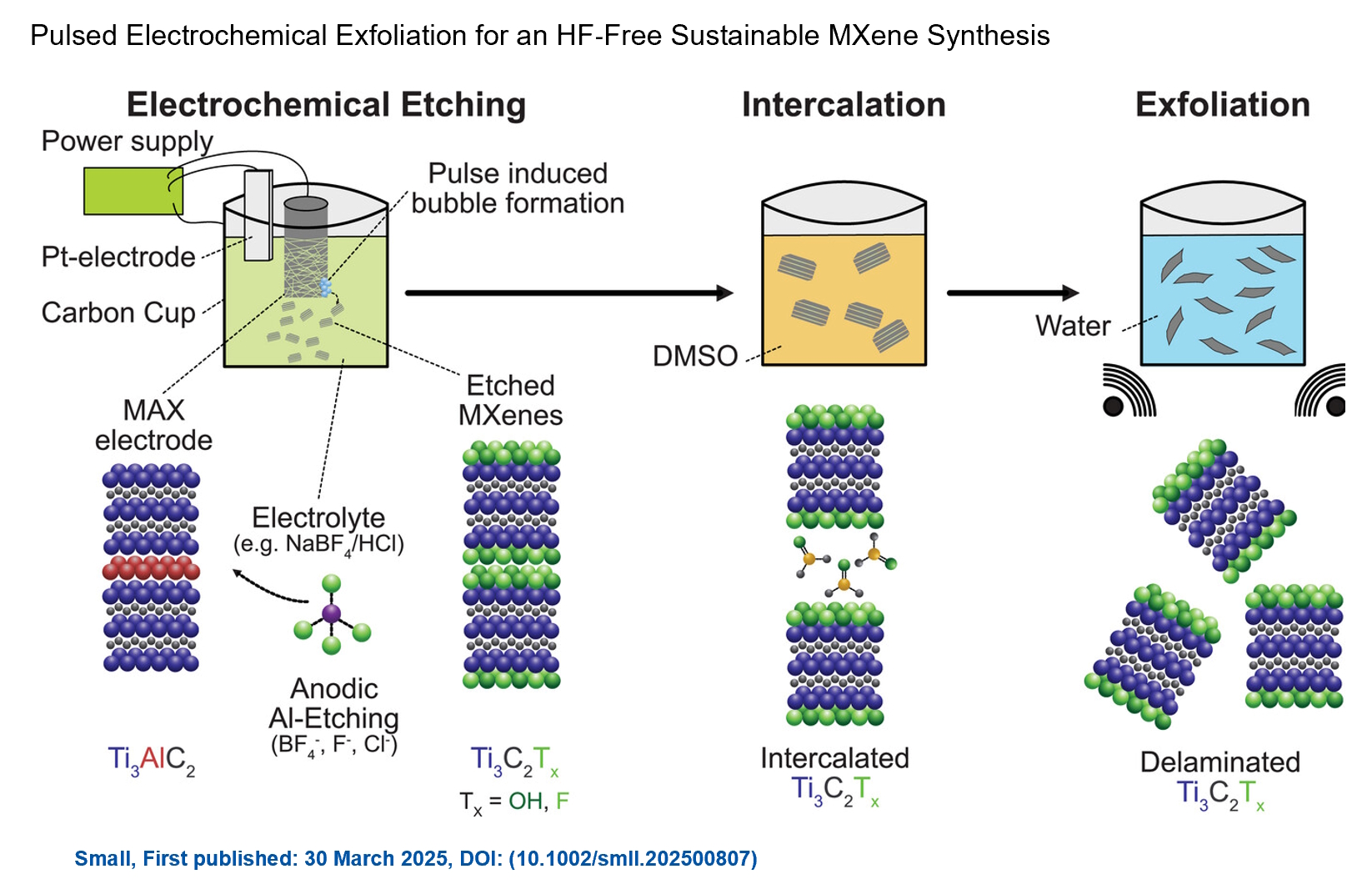 Congratulations and thank you to our collaborators from TU Wien and CEST for very interesting work and making it published! In this work, an upscalable electrochemical MXene synthesis is presented. Yields of up to 60% electrochemical MXene (EC-MXene) with no byproducts from a single exfoliation cycle are achieved.
Congratulations and thank you to our collaborators from TU Wien and CEST for very interesting work and making it published! In this work, an upscalable electrochemical MXene synthesis is presented. Yields of up to 60% electrochemical MXene (EC-MXene) with no byproducts from a single exfoliation cycle are achieved. Congratulations to all collaborators with this interesting joint work!
Congratulations to all collaborators with this interesting joint work!